Delivering Infrastructure Convergence 3.0
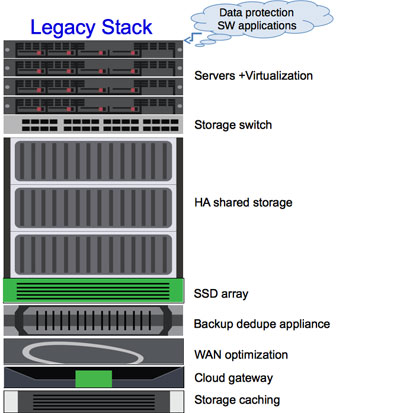 SimpliVity is pioneering the next generation of converged infrastructure, Convergence 3.0.
SimpliVity is pioneering the next generation of converged infrastructure, Convergence 3.0.
The IT infrastructure market is undergoing unprecedented transformation. Infrastructure clutter, complexity and high costs are driving a need to simplify IT and reduce the overall total cost of ownership.
Infrastructure complexity needs to be addressed, typically at least 8-12 different hardware and software products from as many vendors make up the current Data Centre stack, each with a different management interface and each requiring different training. More importantly, each of the separate products that comprise this legacy stack is grossly overprovisioned in order to address intermittent peak workloads of the resident applications.
Server virtualisation went some way to deliver the value of a single shared resource pool to address this challenge but prior to Convergence 3.0 this concept had not been applied across all other products that make up the infrastructure stack.
A brief History - Convergence 1, 2, 3
The sought benefits of convergence are clear: simplification of management, a well-organised and synthesised IT stack, reduction of vendor friction and ultimately cost savings. In 2009 vendors began offering converged products that promised to deliver multiple layers of the IT stack in a single solution.
Convergence 1.0
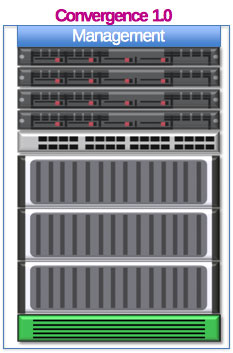 To address the outcry of end-users who were desperately seeking core IT products in a single rack with common management, incumbent vendors or a coalition of vendors integrate existing products, including server, server virtualisation, storage and switch and deliver them as a single offering, sometimes with a new interface.
To address the outcry of end-users who were desperately seeking core IT products in a single rack with common management, incumbent vendors or a coalition of vendors integrate existing products, including server, server virtualisation, storage and switch and deliver them as a single offering, sometimes with a new interface.
These products are stop-gap and like the original legacy stack do not improve efficiency as there is no improvement to resource pooling. They also fail to address the issue of complexity as they do not include data protection, cloud, WAN optimisation, or deduplication functionality, leaving the IT team source these solutions separately.

Convergence 2.0
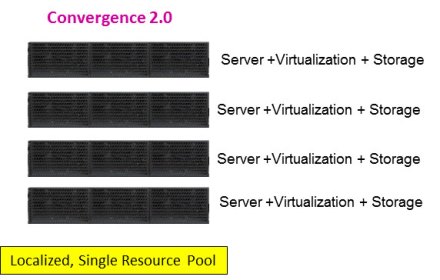 These products bundle the primary stack (servers, virtualization and storage) to offer some IT infrastructure functionality on top of a single, shared x86 resource pool. Sadly they do not address the broader scope of functionality and therefore do not go far enough in reducing complexity and cost.
These products bundle the primary stack (servers, virtualization and storage) to offer some IT infrastructure functionality on top of a single, shared x86 resource pool. Sadly they do not address the broader scope of functionality and therefore do not go far enough in reducing complexity and cost.
While these products provide enhanced utilisation and simplification of management, they don't incorporate all the functionality needed to solve data bloat, and because of this, IOPS remain expensive and IOPS redundancy isn't addressed. And without global data efficiency there is no practical ability to manage geographically dispersed sites from a single management pane.
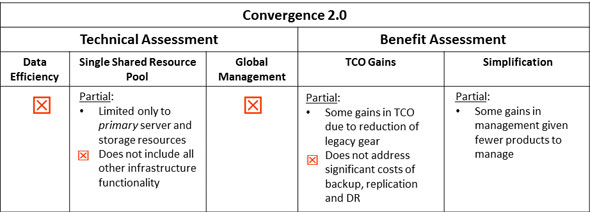
Convergence 3.0
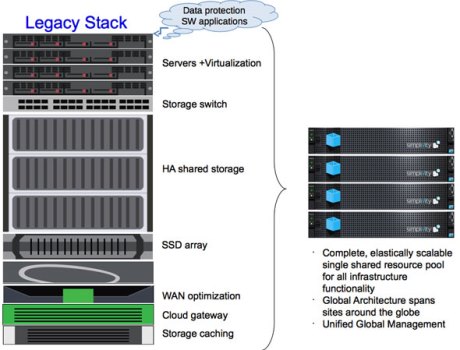 The logical next step, Convergence 3.0 delivers radical simplification and TCO savings by consolidating all requisite infrastructure functionality into a single infrastructure stack, running on an efficient, elastic pool of x86 resources.
The logical next step, Convergence 3.0 delivers radical simplification and TCO savings by consolidating all requisite infrastructure functionality into a single infrastructure stack, running on an efficient, elastic pool of x86 resources.
SimpliVity delivers Convergence 3.0 today, providing a new and highly innovative data architecture that has been designed for high performance, scalability, maximum data efficiency, and global management.
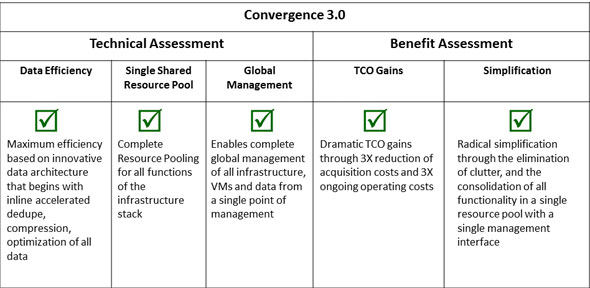
Hyper Convergence
Powered by this innovative data architecture, SimpliVity is able to deliver radical simplification by eliminating the need for all of the core infrastructure products and specialty appliances that today create infrastructure clutter and complexity, and force IT teams to spend most of their budget simply to maintain the status quo. In doing so SimpliVity is delivering on the originally promised benefits of Convergence and SDDC: IT simplification and TCO savings.

To learn more about SimpliVity and Convergence 3.0, please contact Envertica today on 01285 610038 or click the link below.
